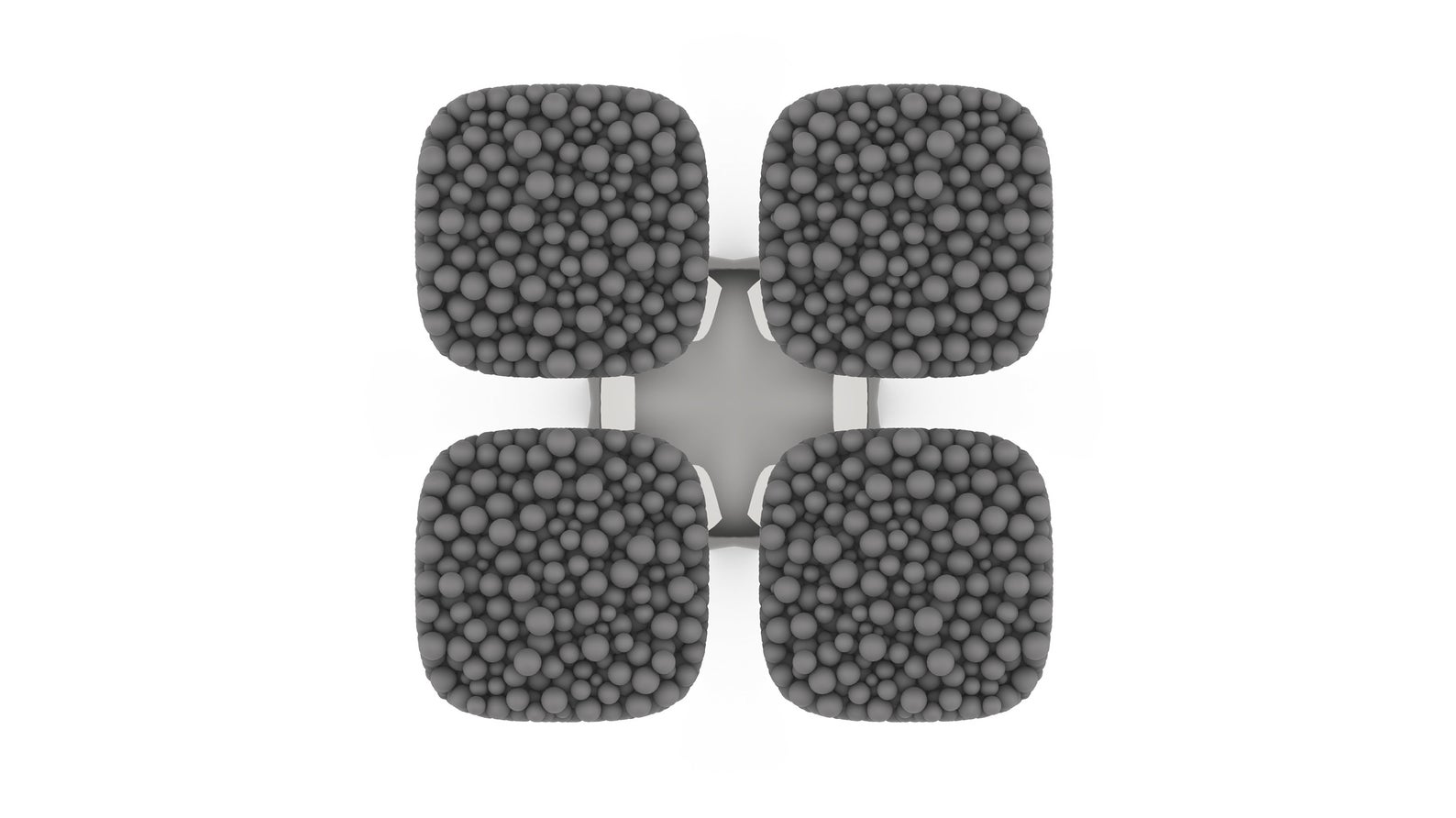Forget Water Cooling, Check Out This $7,300 Passive CPU Cooler
If you're into fanless CPU coolers, and perhaps fantasies, you'll love this gem that FanlessTech recently discovered. A seller on Etsy has put up a rather interesting passive CPU cooler with an eye-watering price tag that ranges from $1,800 to $7,300, but it's hard to tell if this is an actual product.
The CPU cooler itself doesn't have a proper name, instead listed as an "organic workstation server fanless supercomputer heat sink," and the seller markets it with a bunch of generic keywords. According to the product description, the base of the heatsink is fabricated with 3D printing. The merchant offers a choice of four different materials for what appears to be the base of the cooler. The steel, aluminum and bronze models cost $1,828.42, $2,437.91 and $5,485.30, respectively. The most expensive model, which is made of copper, will set you back $7,313.73.



This is where things get weird: The base is attached to four stacks that consist of a plethora of small metal balls of different proportions. The seller claims that the very large surface-area-to-volume ratio helps absorb and dissipate the heat quicker. There doesn't seem to be any heat pipes, though, which raises the question of how it transfers the heat to the balls. And we can't quite figure out what the term "organic" in the title means.
More importantly, it's unknown how the CPU cooler is fastened to the CPU socket on the motherboard. On the topic of compatibility, the seller doesn't mention which sockets are supported. The product description suggests an Intel platform and processors up to Core i7 SKUs.
Apparently, the CPU cooler is a prototype, but it's available for order. The estimated manufacturing time is within 10 to 12 weeks from the moment of the order. The seller lives in Australia, so you'll have to factor in the shipping cost, adding at least another $50 to the already exorbitant price tag. Perhaps the biggest question is if this is an actual item or not, but dropping $7,313 probably on this fantastical fan-less cooler isn't the best way to find out - this product could be nothing more than a scam.
Get Tom's Hardware's best news and in-depth reviews, straight to your inbox.

Zhiye Liu is a news editor, memory reviewer, and SSD tester at Tom’s Hardware. Although he loves everything that’s hardware, he has a soft spot for CPUs, GPUs, and RAM.
-
COLGeek Benchmarks, or it isn't real. Seems more like a piece of modern art than a usable component. :rolleyes:Reply -
I'm in full agreement with the Colonel. The images accompanying the story are obviously raytraces from Blender or such. And, with only one point of contact between each ball there's no way there will be much in the way of heat transfer. I call scam without even needing any numbers.Reply
-
hotaru.hino Did they individually hand solder all of those balls together or do they just stick there with some kind of magic?Reply -
Integr8d ReplyCOLGeek said:Benchmarks, or it isn't real. Seems more like a piece of modern art than a usable component. :rolleyes:
Don't think about it. JUST BUY IT! -
Chung Leong In a pebble-bed reactor, convection flow is enough to keep it from melting down. There could be something to the design.Reply -
ben_xman With every sphere in those stacks the transfer efficiency is horribly decreased. There is next to no surface area touching between each ball meaning after only a few cm, or heck, right there at the point that grouping meets the base barely any heat is being transferred.Reply
Why offer a steel version? Are they unaware of how inefficient steel is at conducting heat?
Why 3D print the bases instead of just molding or milling it? Looks like the design would be far easier to mold or mill from stock than to spend the many more hours and expensive resources like filament and electricity 3D printing it. That's not going to add any sort of performance or structural benefit.
It's just a flashy design trying to be sold by looks (and wow, it costs so much upfront, so very Apple of us) without any real engineering thought put into it. I'd be surprised if it works any better than older intel stock coolers with the fan removed. Much less anyone actually getting one with how prototype it looks right now. -
USAFRet A couple hours in Blender/Rhino, and a day to print...I could make make something that looks exactly like that.Reply
Show us one actually installed.
